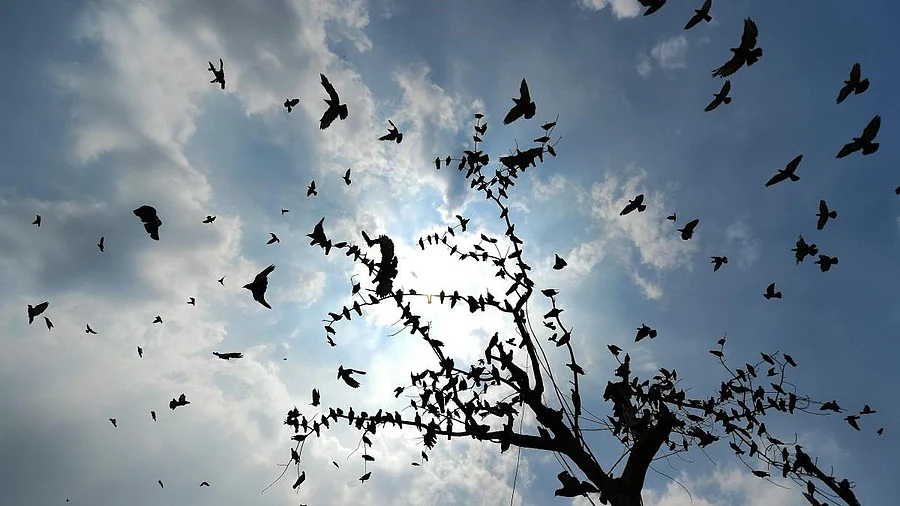
Representative image.
Credit: PTI Photo
Bengaluru: The BBMP’s wildlife rescue team is scrambling to keep up with a surge in calls as the scorching weather has increased snake sightings and birds falling from the sky.
The team of seven rescuers now handles nearly 150 calls a day, nearly triple the 60 to 65 calls received in the previous years.
Public awareness about wildlife rescue hotlines remains low, leading to a vast under-reporting of reptilian deaths.
BLG Swamy, Deputy Conservator of Forests for all the eight zones of the BBMP, told DH that an influx of snakes into homes, birds plummeting from the sky, and increased trouble caused by monkeys have been reported in the last two months due to rising temperatures elsewhere. “We have not recorded any snake deaths due to higher temperatures so far,” he said.
Prasanna Kumar, wildlife welfare warden for the BBMP's forest wing, said they rescued only snakes in the last two months, including the Indian cobra, Russell viper, Indian rat snake, checkered keelback, common krait, and rock python.
However, he feels that people restrain from approaching the civic body for animal rescue concerns. “There is a bystander tendency among people when they see animals in danger. If a hundred people see a dying snake, chances are, five might take the responsibility to rescue it,” Kumar said.
Vattam Adithya, a Ballari-based snake rescuer, told DH how urbanisation has gradually eroded the natural habitats of snakes over time.
“Snakes, unlike human beings, are ectothermic or cold-blooded. They do not possess the ability to generate their own body heat and get their body temperature from the surroundings,” Adithya said, adding that snakes find it harder to adapt to atmospheric temperatures above 30 to 32 degrees Celsius.
Increased humidity due to brief rains in the past week in Kengeri, Anekal and Bengaluru outskirts has made breathing difficult for the snakes, Adithya noted. He said that when humidity is high, they look for spaces to hide, prompting them to slither towards cooler places.